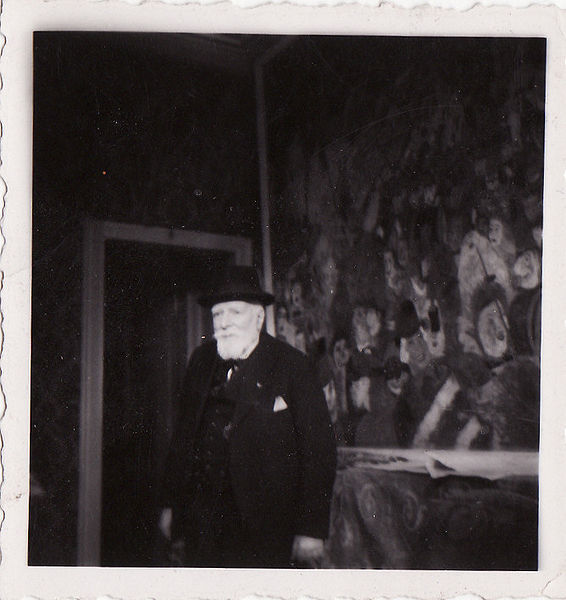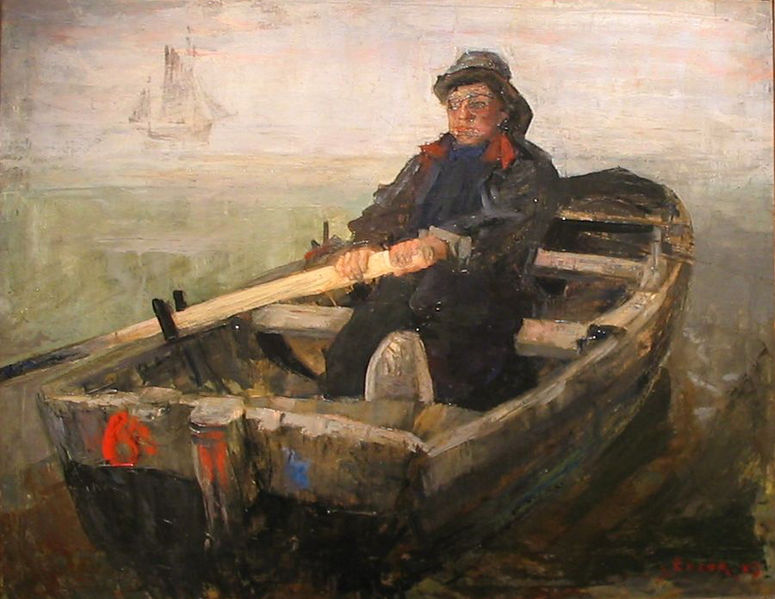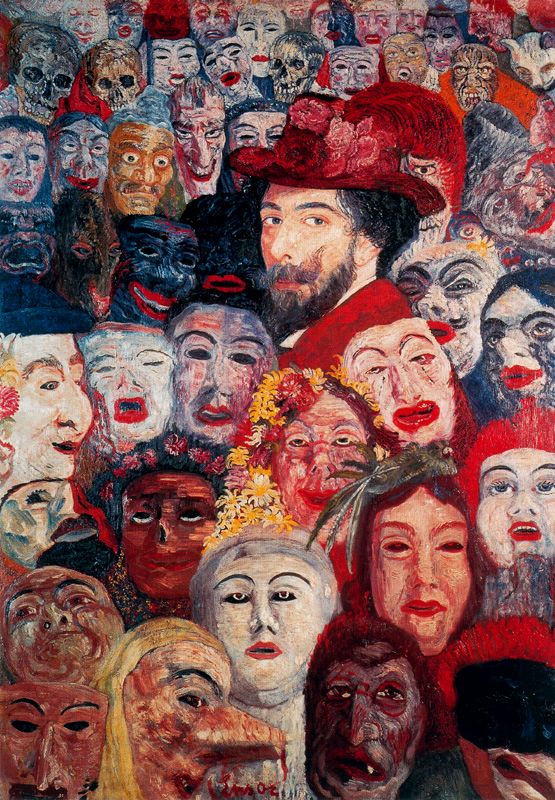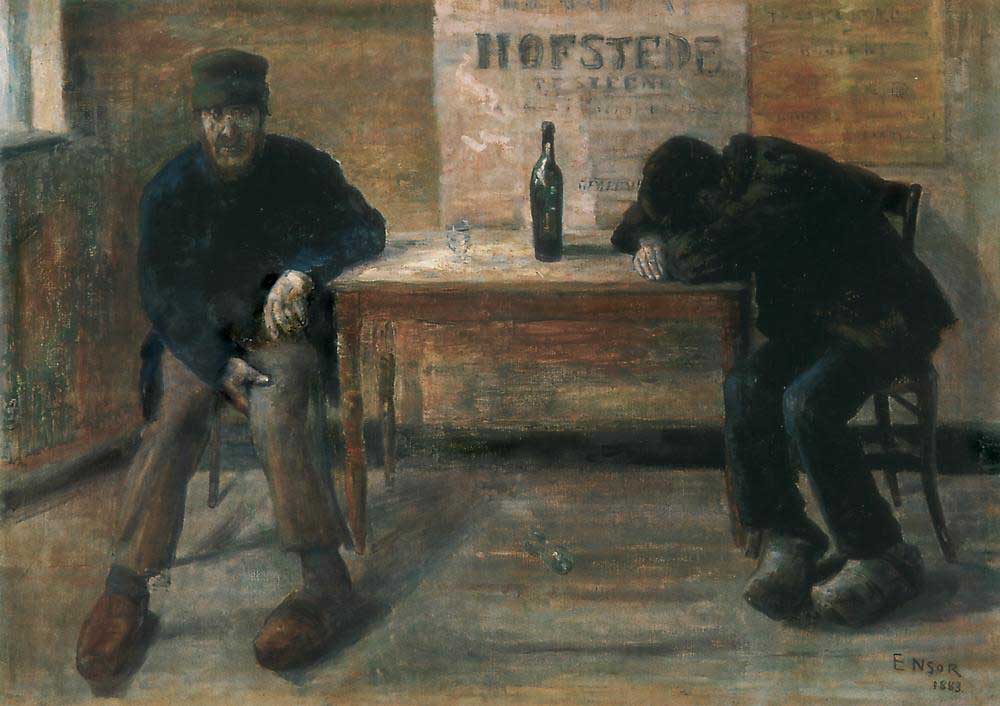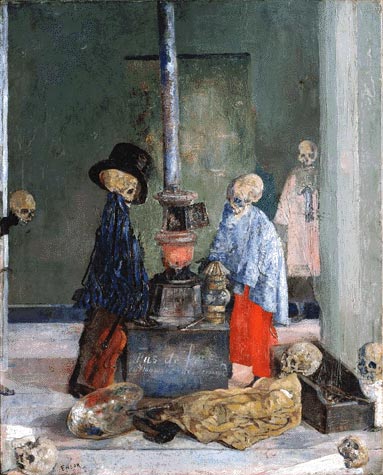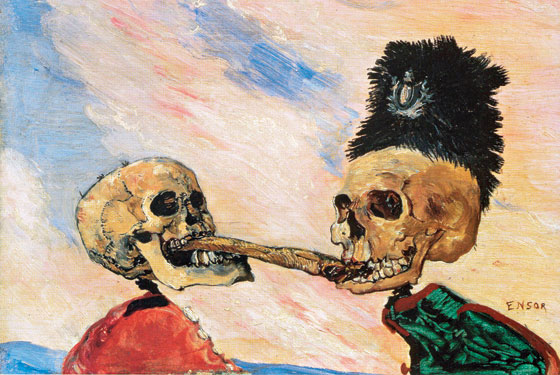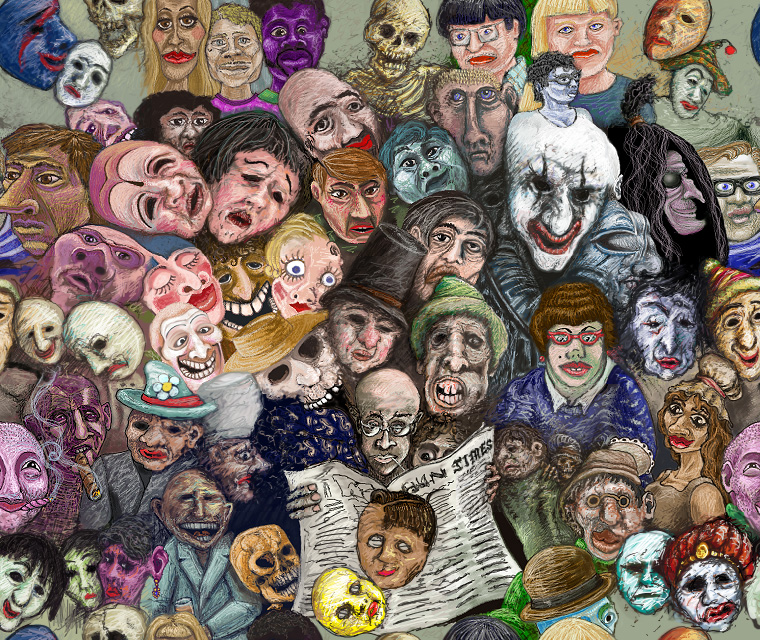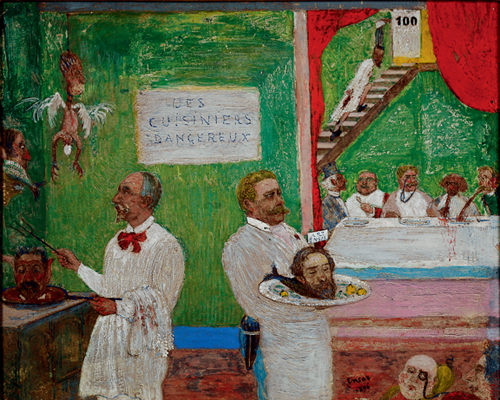<Back to Index>
- Engineer Robert Alexander Watson-Watt, 1892
- Painter James Sidney Edouard, Baron Ensor, 1860
- Duke of Orléans Louis Philippe Joseph, 1747
PAGE SPONSOR
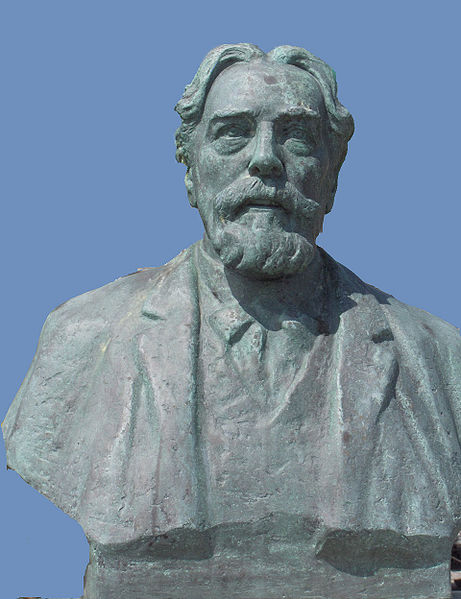
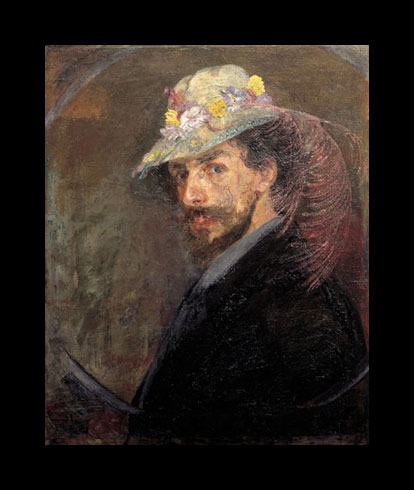
James Sidney Edouard, Baron Ensor (April 13, 1860 – November 19, 1949) was a Flemish - Belgian painter and printmaker, an important influence on expressionism and surrealism who lived in Ostend for almost his entire life. He was associated with the artistic group Les XX.
Ensor's father, born in Brussels of English parents, was a cultivated man who studied engineering in England and Germany. Ensor's mother was Flemish. Ensor himself lacked interest in academic study and left school at the age of fifteen to begin his artistic training with two local painters. From 1877 to 1880, he attended the Académie Royale des Beaux-Arts in Brussels, where one of his fellow students was Fernand Khnopff. Ensor first exhibited his work in 1881. From 1880 until 1917, he had his studio in the attic of his parents' house. His only travels were three brief trips to Paris, London, and Holland.
During the late 19th century much of his work was rejected as scandalous, particularly his painting Entry of Christ into Brussels (1888 – 89), but his paintings continued to be exhibited, and he gradually won acceptance and acclaim. In 1895 his painting The Lamp Boy (1880) was acquired by the Royal Museums of Fine Arts of Belgium in Brussels, and he had his first solo exhibition in Brussels. By 1920 he was the subject of major exhibitions; in 1929 he was named a Baron by King Albert, and was the subject of the Belgian composer Flor Alpaerts's "James Ensor Suite"; and in 1933 he was awarded the band of the Légion d'honneur. Even in the first decade of the 20th century, however, his production of new works was diminishing, and he increasingly concentrated on music — although he had no musical training, he was a gifted improviser on the harmonium, and spent much time performing for visitors.
Against the advice of friends, he remained in Ostend during World War II despite the risk of bombardment. In his old age he was an honored figure among Belgians, and his daily walk made him a familiar sight in Ostend. He died there after a short illness, on November 19, 1949.
While Ensor's early works, such as Russian Music (1881) and The Drunkards (1883), depict realistic scenes in a somber style, his palette subsequently brightened and he favored increasingly bizarre subject matter. Such paintings as The Scandalized Masks (1883) and Skeletons Fighting over a Hanged Man (1891) feature figures in grotesque masks inspired by the ones sold in his mother's gift shop for Ostend's annual Carnival. Subjects such as carnivals, masks, puppetry, skeletons, and fantastic allegories are dominant in Ensor's mature work. Ensor dressed skeletons up in his studio and arranged them in colorful, enigmatic tableaux on the canvas, and used masks as a theatrical aspect in his still lifes. Attracted by masks' plastic forms, bright colors, and potential for psychological impact, he created a format in which he could paint with complete freedom.
The four years between 1888 and 1892 mark a turning point in Ensor’s work. Ensor turned to religious themes, often the torments of Christ. Ensor interpreted religious themes as a personal disgust for the inhumanity of the world. In 1888 alone, he produced forty-five etchings as well as his most ambitious painting, the immense The Entry of Christ into Brussels. In this composition, which elaborates a theme treated by Ensor in his drawing Les Aureoles du Christ of 1885, a vast carnival mob in grotesque masks advances toward the viewer. Identifiable within the crowd are Belgian politicians, historical figures, and members of Ensor's family. Nearly lost amid the teeming throng is Christ on his donkey; although Ensor was an atheist, he identified with Christ as a victim of mockery. The piece, which measures 99½ by 169½ inches, was rejected by Les XX and was not publicly displayed until 1929. After its controversial export in the 1960s, the painting is now at the J. Paul Getty Museum and is on display at the Getty Center in Los Angeles, California. Also known as Christ's Entry into Brussels in 1889, it is considered "a forerunner of twentieth century Expressionism."
As
Ensor achieved belated recognition in the final years of the 19th
century, his style softened and he painted less. Critics have generally
seen Ensor's last fifty years as a long period of decline. The
aggressive sarcasm and scatology that had characterized his work since
the mid-1880s was less evident in his few new compositions, and much of
his output consisted of mild repetitions of earlier works. Significant works of Ensor's late period include The Artist's Mother in Death (1915), a subdued painting of his mother's deathbed with prominent medicine bottles in the foreground, and The Vile Vivisectors (1925), a vehement attack on those responsible for the use of animals in medical experimentation. James
Ensor is considered to be an innovator in 19th century art. Although he
stood apart from other artists of his time, he significantly influenced
such 20th century artists as Paul Klee, Emil Nolde, George Grosz, Alfred Kubin, Wols, Felix Nussbaum, and other expressionist and surrealist painters of the 20th century. The
yearly philanthropic "Bal du Rat Mort" (Dead Rat Ball) in Ostend
continues a tradition begun by Ensor and his friends in 1898. His works are in many public collections, notably the Modern Art Museum of the Royal Museums of Fine Arts of Belgium in Brussels, the
Royal Museum of Fine Arts in Antwerp, and the Museum voor Schone
Kunsten in Ostend. Major works by Ensor are also in the Museum of
Modern Art in New York, the Musée d'Orsay, Paris, and the
Wallraf-Richartz Museum in Cologne. A collection of his letters is held in the Contemporary Art Archives of the Royal Museums of Fine Arts in Brussels. Ensor has been paid homage by contemporary painters and artists in other media: he is the subject of a song, "Meet James Ensor", recorded in 1994 by the alternative rock duo They Might Be Giants. The 1996 Belgian movie Camping Cosmos was inspired by drawings of James Ensor, in particular Carnaval sur la plage (1887), La mort poursuivant le troupeau des humains (1896), and Le bal fantastique (1889). The film's director, Jan Bucquoy, is also the creator of a comic Le Bal du Rat mort inspired by Ensor. An exhibition of approximately 120 works by James Ensor was shown at the Museum of Modern Art in New York City in 2009, and then at the Musée d'Orsay, Paris, October 2009 – February 2010.
